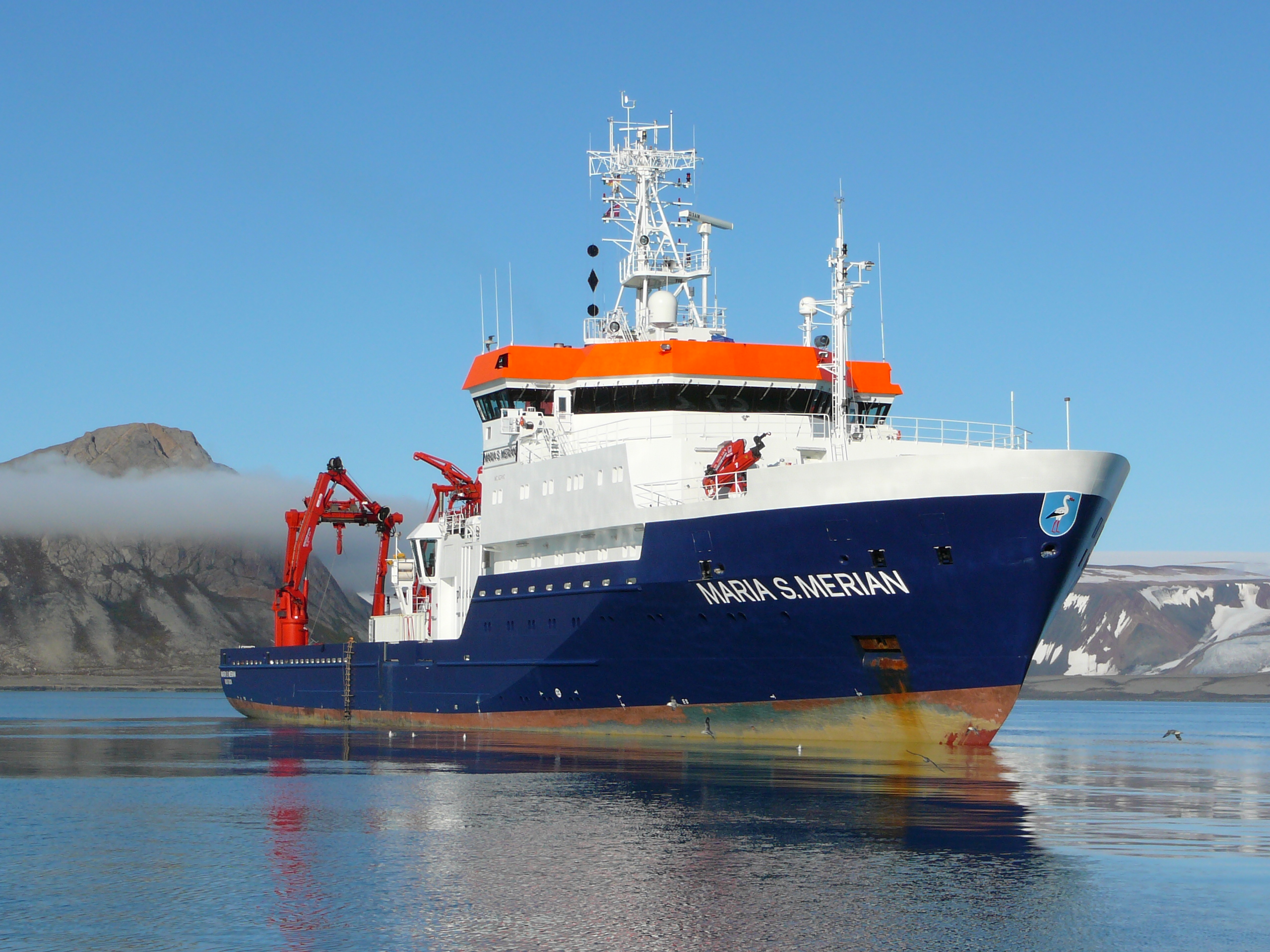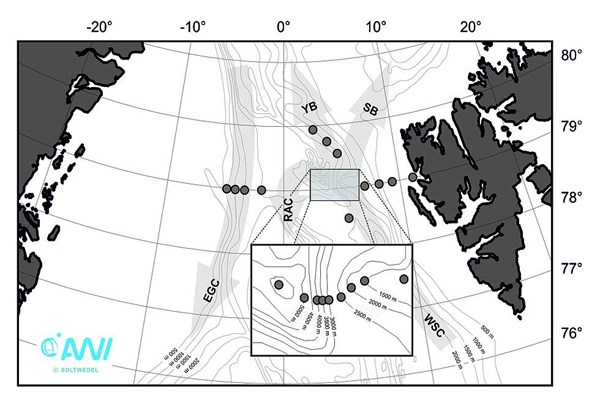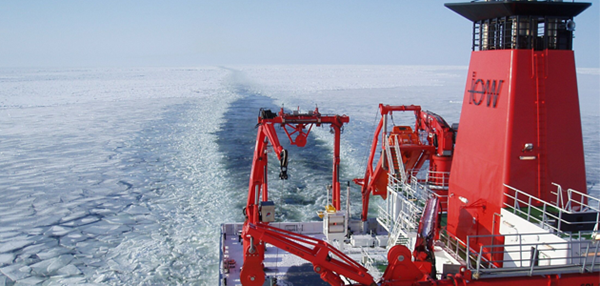
Groundbreaking experiments were carried out at the Hausgarten observatory in 2018. The Alfred-Wegener-Institute | Helmholtz-Center for Polar and Marine Research (AWI) established the Long-Term Ecological Research (LTER) observatory HAUSGARTEN to detect and track the impact of large-scale environmental changes in the transition zone between the northern North Atlantic and the central Arctic Ocean, and to determine experimentally the factors controlling deep-sea biodiversity.

The Hausgarten Observatory is situated in the Fram Strait between Svalbard and Greenland. Image (c) Soltwedel, AWI.
The observatory currently consists of 21 permanent sampling sites on the West-Spitsbergen and East-Greenland slope at water depths between 250 and 5500 m. Regular sampling as well as the deployment of moorings and different free-falling systems (bottom-lander), which act as local observation platforms, has taken place since the observatory was established back in 1999.
Ocean acidification has been identified as a risk to marine ecosystems, and substantial scientific effort has been expended in investigating its effects, mostly in laboratory manipulation experiments. Experimental manipulations of CO2 concentrations in the field are difficult, and the number of field studies are limited to a few locales. During RV MERIAN expedition MSM77, the HAUSGARTEN observatory was extended with an experimental system to study, for the first time in deep Arctic waters, impacts of ocean acidification on benthic organisms and communities. The autonomous arcFOCE (Arctic Free Ocean Carbon Enrichment) system was developed to create semi-enclosed test areas on the seafloor where the seawater’s pH (an indicator of acidity) can be precisely controlled for weeks or months.
The implementation of an arcFOCE for long-term experiments will enable researchers to generate data on the resistance of arctic marine benthic organisms and communities to a reduction in ocean pH. The experimental set-up is based on a free-falling system (bottom-lander). Before the long-term deployment of the lander-based arcFOCE system at 1500 m water depth in the eastern HAUSGARTEN area, a short test deployment was performed at the beginning of the campaign. Following a successful test, the system was re-deployed on the Vestnesa Ridge off Svalbard where it will remain operational for a period of 12 months. In 2019, a deep sea remotely operated vehicle (ROV) named PHOCA (Geomar, Germany), which has a max. diving depth of approx. 2000 m, will be sent to retrieve the equipment.
Further deployments within and after the duration of the INTAROS project are also planned for deeper waters and different regions within Fram Strait.

To learn more about this expedition and its objectives, you can consult the publicly available Cruise Programme via the German Research Fleet Coordination Centre and keep up to speed on news from the field via MSM77 Cruise Reports.
You can check out all the observing sites assessed by INTAROS in this interactive map.
Watch this space for more updates from the INTAROS fieldwork season, coming very soon.
03 August 2018